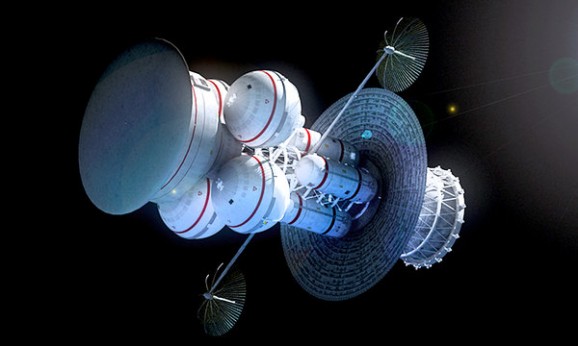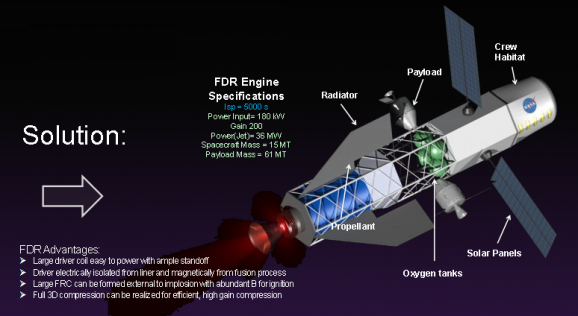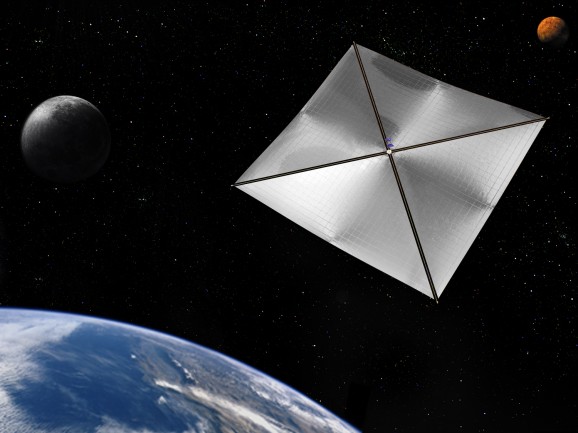Seven Possible Scenarios For Manned Interstellar Travel
This article is more than 2 years old
 Since we learned that Voyager 1 has been in interstellar space for over a year, it’s become a bit easier to imagine that someday humans might follow. At the moment, we’re a bit more focused on getting humans to Mars and watching how that goes on reality TV, but scientists are thinking big and many of them believe that we can make major strides in interstellar travel in the next 100 years. That is, if the government gets its act together.
Since we learned that Voyager 1 has been in interstellar space for over a year, it’s become a bit easier to imagine that someday humans might follow. At the moment, we’re a bit more focused on getting humans to Mars and watching how that goes on reality TV, but scientists are thinking big and many of them believe that we can make major strides in interstellar travel in the next 100 years. That is, if the government gets its act together.
Of course, while some scientists believe colonizing space is an eventuality, others believe it’ll never happen, and some, including NASA’s former Breakthrough Propulsion Physics Project head, Marc Millis, question the claim that we could reach the stars this century. The problem is that we don’t currently know of a way to power these trips, and even when we do figure that out, it’ll take a while to implement those technologies in interstellar spacecraft. Still, even Millis is game to try — he founded the Tau Zero Foundation to research technologies that might propel us beyond the solar system.
The problem is that space ain’t small. The nearest star aside from the sun is 4.2 light years away, though the Helios probes could make the trip in a mere 19,000 years. In addition to traversing massive distances, we’d also need to find a habitable planet, the closest of which (that we know of so far) is about 22 light years, hundreds of thousands of standard earth years, away — one hell of a trip.
Still, good ol’ DARPA is funding “100 Year Starship” research, and there’s reason to believe this idea isn’t quite as ludicrous as we once thought. In addition to having located potentially habitable planets, we also know that along the way there are opportunities to harvest materials for fuel, water, and other necessities. Peter Schwartz, futurist and director of the Long Now Foundation, outlined seven possible scenarios for interstellar travel detailed in the book Starship Century. The ideas may not be feasible anytime soon (or at all), but why should that be a reason to stop dreaming?
Here are the seven possibilities Schwartz discusses:
1. Nuclear thermal rockets, because chemical rockets — and their need for fuel — won’t do the trick. NASA designed nuclear thermal rockets back in the ’60s, so this technology exists, but just needs to be harnessed and used for the purposes of interstellar travel.

2. Nuclear fusion rockets could speed things up considerably and are currently being researched with funding from NASA. Schwartz thinks it’s possible that we could solve the physics and engineering obstacles associated with these rockets in the next century.
3. Interstellar ramjets, or a spaceship that powers itself by taking in hydrogen and funneling it into a fusion reactor. Carl Sagan was a fan of this idea, as were other sci-fi authors. We haven’t figured out how to build it yet, and worse, fusing interstellar hydrogen is particularly tough. This one may remain science fiction.

4. Solar sailships, such as the Sunjammer, which will set sail in November 2014. It’s only a model of what we’d need to head beyond the solar system, but it’s a start. They’re also relatively fast — they could easily beat Voyager 1 in a race.
5. Beam-driven sailships would be even faster than solar sailships, which make them a better option for long trips. They’d be powered by orbiting lasers that convert sunlight into electricity.
6. Wormholes, an idea sci-fi fans are familiar with, are pretty unlikely, but damn, taking a shortcut through space-time sure sounds good. We don’t know that stable wormholes exist, let alone that it would be possible to use them. Still, NASA’s funding some research into wormholes and their related friend, the warp drive.
7. Comet hopping sounds a sport at the alien Olympics, but it’s actually an interesting idea. We wouldn’t have to get to a far-off planet in one go — we could actually hop there bit by bit on these cosmic cruisers.
For all these big ideas, the issue of funding remains problematic. But if scientists achieve a breakthrough in any of these technologies that makes interstellar travel seem feasible, perhaps we can round up the resources. Or we could just wait for the aliens to show us how it’s done.












